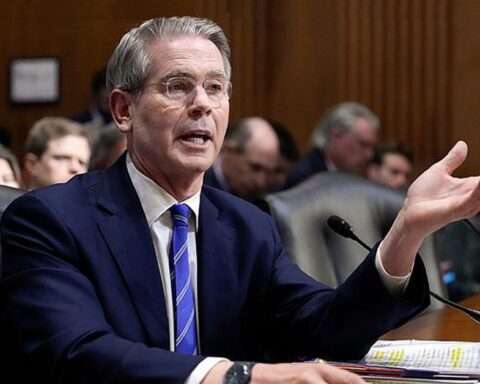Against this backdrop, the S&P 500 and Dow industrials have maintained bullish holding patterns, asserting trading ranges underpinned by familiar support.
Before detailing the U.S. markets’ wider view, the S&P 500’s US:SPX hourly chart highlights the past two weeks.
A historically hefty advantage that the S&P 500 dividend yield has held over the benchmark U.S. Treasury note is on the verge of disappearing, a year after the collapse in interest rates set the stage for Wall Street’s recovery from the pandemic sell-off.
Investor concerns that measures to restore a U.S. economy hammered by the global pandemic could also spark inflation lifted the yield on the 10-year note as high as 1.394% overnight, the highest since February 2020. The yield was last at 1.365% late on Monday.
That compares with the S&P 500’s dividend yield of about 1.46%, according to Refinitiv’s Datastream. That yield has gradually declined as the index hit record highs for the past several months, fueled by low interest rates that have made stocks more attractive.
“This is a return to the normal pattern of things, where dividend yields are less than the 10-year Treasury,” said S&P Dow Jones Indices senior index analyst Howard Silverblatt.
Treasury yields have moved steadily higher in recent weeks as Democrats push a $1.9 trillion coronavirus relief package through Congress, spending that is viewed by many as necessary to boost the economy, but also seen as potentially stirring inflation as the country begins to recover. The Fed’s ongoing loose monetary policy also has some investors worried about inflation.
More gains in Treasury yields could put pressure on stocks with the highest valuations, Jefferies analysts wrote in a report on Sunday.
Treasury yields tumbled in February 2020 as the coronavirus pandemic shocked global financial markets and crippled much of the world’s economy. Simultaneously, falling stock prices created a spike in the S&P 500 dividend yield, even as many companies suspended payouts to shareholders.
The S&P 500 dividend yield in late March reached 2.76%, a historically large premium over the 10-year Treasury yield of 0.76% at that time, according to Datastream.
Since then, companies have largely resumed their dividends, with many even increasing their shareholder payouts. After total S&P 500 dividend payments dipped less than 1% last year to $483 billion, total dividends in 2021 are on track to rise by about 5%, Silverblatt said.
With reporting by Reuters and Marketwatch






